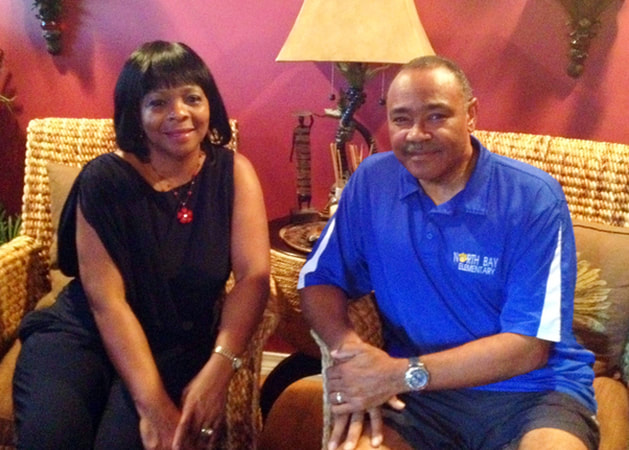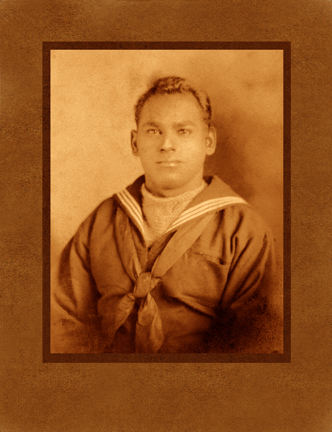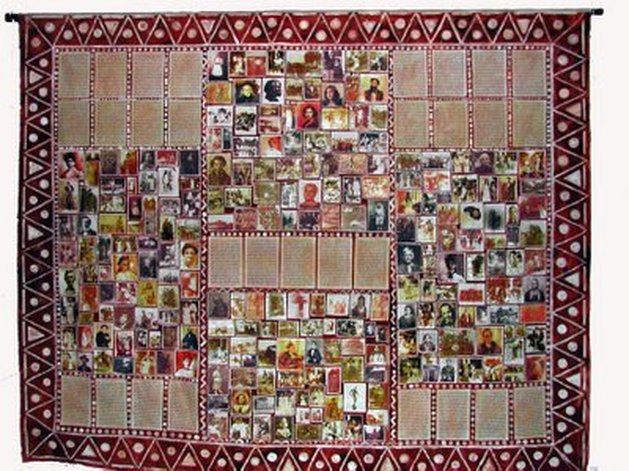|
by Karen Fineran In a cozy, welcoming home on Third Street, live members of one of the oldest families in Bay St. Louis – and one of the oldest Creole families on the Coast. Myron Labat, Sr. and his wife Rhonda Labat greeted me warmly and told me a little bit about their family. Myron, the former principal at North Bay Elementary School, has lived in Bay St. Louis his entire life. He attended St. Rose Elementary and St. Rose High School until it closed in 1968, graduating from Bay High. Rhonda is from Meridian, Mississippi, and met Myron while they were in school at USM Hattiesburg. Rhonda has worked at DuPont for 37 years as an Administrative Assistant in the medical department.  Some Labat Family History  The Labat family has a long history here in the Bay. According to Myron and Rhonda, members of their family - which originated from southern France - first came to the Bay St. Louis area around 1850. Myron’s great grandfather, Joseph “Papa Joe” Labat, Sr. was the patriarch of the Labat lineage here in the Bay. In 1925, Papa Joe was the General Contractor for the building of the St. Rose Church, rectory and convent. The 40 x 80 foot church, built to accommodate 350 people, was completed in 1926. Shortly thereafter, St. Rose de Lima Parish was made independent of Our Lady of the Gulf Parish, with the St. Rose church as its treasured centerpiece. After that, all of the members and generations of the Labat family attended St. Rose de Lima Catholic School and St. Rose Church. Papa Joe Labat went on to employ many people from this area, whose families still work in construction and carpentry to this day. His other buildings included VCJ Methodist Church, St. Augustine Seminary, numerous homes on the beachfront, five churches in the Rocky Hill, Fenton and Kiln communities, and the first Labat’s Dry Cleaner building. He married Leonore Fayard and they raised eleven children (including Celestine, see below). One of Papa Joe’s children, Joseph Sumner Labat, was the owner of Labat’s Cleaners on Easterbrook Street for many years. Sumner was also a member of a jazz and dance band, and used to play at the 100 Men Hall with Harry Fairconnetue, Eddie Thomas, and Eddie Palloade. Sumner’s wife Carmen was a midwife who delivered about three generations of children. Sumner and Carmen’s younger sons, Rudy and Joe, continued the Labat dry-cleaning business after their father retired, until it shut its doors after Hurricane Katrina’s destruction. Their oldest son, Bernard Joseph, was a master carpenter by trade, and also a concrete finishing contractor. Bernard and his wife Dorothy Mae parented 10 children, including Myron, Sr. (Bernard and Dorothy have both passed on). The Labat Project  Myron’s Great Aunt “Teenie” (Celestine, the sister of his grandmother Carmen) achieved recognition and distinction for her stories, before dying at the impressive age of 104 in 2002. Myron fondly recalled that Aunt Teenie liked her wine and her cake, and that, even on her 102d birthday party, she remembered everybody’s names, even the smallest of children, and she remained interested in the details of their lives and their tennis matches up until she died. The Labat Project was initiated by Lori K. Gordon in 2000, when she began conducting an oral history with Celestine here in the Bay. Over the course of two years, Celestine shared her life story with Gordon, and loaned her family photo albums. The project is an intensive look into the history of the Creole culture of coastal Mississippi. From the Labat family photographs, Gordon created an 8’ x 10’ art quilt titled “Labat: A Creole Legacy.” The quilt was completed in 2002, and it was shown to a thrilled and moved Celestine Labat shortly before her death that year. In late 2006, the quilt was acquired by the Smithsonian Institution for inclusion in their permanent collection! The Labat Project now constitutes a traveling exhibit of eighteen panels, each of which displays images from the Labat family archives and portions of Celestine Labat's oral history. The Project opened earlier this year at the Bay St. Louis branch of the Hancock County Library and at the East Biloxi branch of the Harrison County Library. If you missed it then, you'll have another chance locally. From November 28- December 26, the exhibit will be showing at the New Orleans African-American Museum, with an opening reception in afternoon of Dec 15; (time tba, check www.thelabatproject.blogspot.com). Comments are closed.
|
Categories
All
Archives
July 2024
|
Shoofly Magazine Partners
Our Shoofly Partners are local businesses and organizations who share our mission to enrich community life in Bay St. Louis, Waveland, Diamondhead and Pass Christian. These are limited in number to maximize visibility. Email us now to become a Shoofly Partner!


























 RSS Feed
RSS Feed























